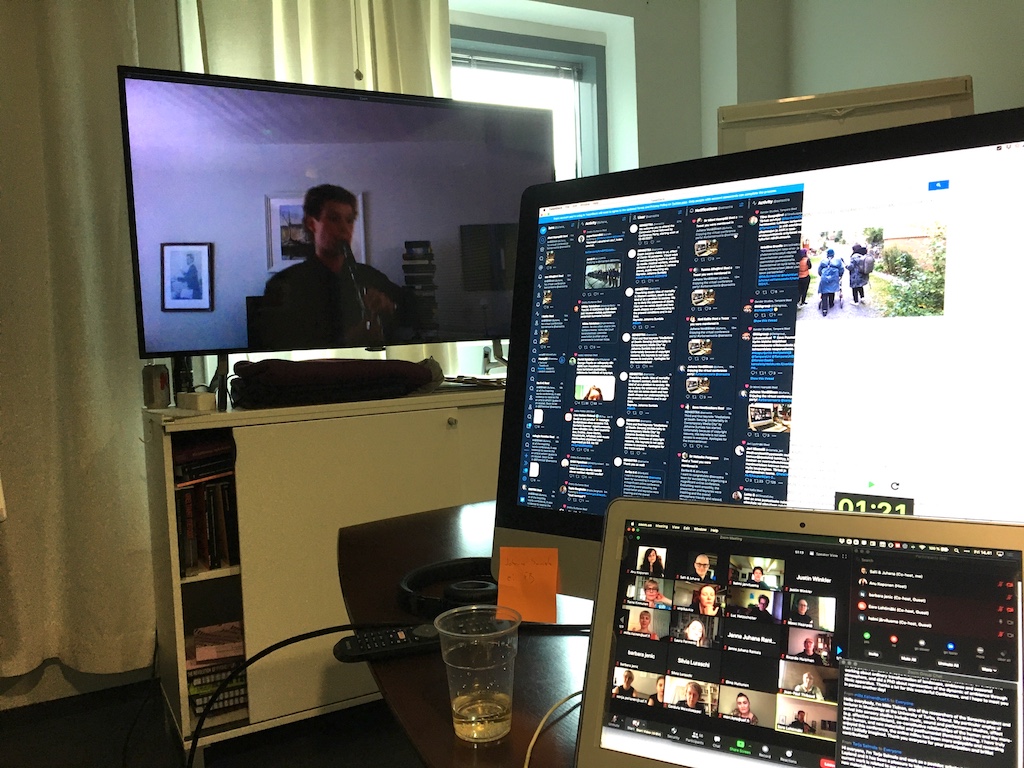Recalibrating after the sensory lockdown
June 29, 2020 was a long-awaited day in Finland. After the three months of staring steadily at the first rapidly rising and then slowly declining Covid-19 figures, the number of patients in intensive care finally went back to zero. Already two weeks earlier, the Finnish government had revoked the Emergency Powers Act, signalling a steady but careful shift towards a “new normal”: a sort-of-ordinary social life still haunted by a cautionary undertone.
Although Finland never went to a complete lockdown – there were no curfews, half of the employees worked on-site, the nurseries remained open throughout the spring –, the experiences of the strange and frightening period are still largely to be processed, debated and critically unpacked. While the media discourse and the governmental sources stressed that “we’re all in the same boat”, there was actually a mishmash of tiny vessels with tremendously varying capacities in which people had to sail through the unknown sea.
The experience(s) of Covid-19 are illuminating also for sensory studies, even if still too close to be thoroughly scrutinised. The regulations and recommendations for physical distancing imposed a sort of “sensory lockdown”, a massive in vivo socio-cultural experiment that could have never been implemented without the threat of the pandemic.
It would be natural to think of the past spring in terms of sensory deprivation: we were advised not to touch other people or even to be in the same physical space with them. We had to let go of elementary ways of connecting bodily with others. Also, what was meant as physical distancing quickly became social distancing. Even the spatial boundaries inside which we could wander were severely limited.
However, and especially from the perspective of sensory studies, it is also important to look into how people remediated and reconfigured their habits and sensory relations in the exceptional conditions. A sudden disruption of the accustomed senso-social order not only gives hints about how the “old normal” was constituted in the first place but also sheds light to how people devise new improvisatory tactics that may go well beyond merely compensating for the reduced physical contacts. We were deprived of certain modes of sensing (-together) but surging or even abundant with other ones.
For Sensotra, in April 2020, our little worry among the much bigger worries was to decide on what to do with our much-anticipated international conference: Urban-related sensoria. Transferring a sensory studies conference into a purely digital space was not an easy decision to make. Many sensorial and bodily elements – sights, smells, sounds, or proprioseptics of walking together – would evidently be lost. Neither could we enjoy the particular landscape (in Koli national park, Finland) what we thought would have provided an inspiring backdrop for exchanging and developing ideas. However, we did not want either to throw away the unique opportunity of bringing together researchers, artists and activists around the common topic – of sensing the urban space.
In June 2020, when preparing the technical aspects of the online conference, I already felt “Zoom-exhausted”. Even that the online teaching for the spring term at the University of Eastern Finland went quite smoothly, I had recognised that the online-only working mode had become burdensome: in every Zoom meeting, there seemed to be less cameras on, and less smiling faces in the ones that were. We were, or at least some of us felt being, overburdened by a restricted mode of sensory communication.
The decision of organising the Urban sensoria conference online somehow reflects the approach that Sensotra takes towards the historical transformations of the sensoria more generally: we acknowledge that the changes brought about by new technologies (such as smartphones) can be (and often are) drastic, pushing away customary ways of relating to the environment and other people. Still, we cannot submerge ourselves into a melancholy that would prevent us from seeing the novel and emerging modes of sensing-together.
From my perspective, which is evidently a partial one, the conference was a success. Instead of negative affects invoked by the Zoom burden, what I witnessed was a prolonged moment of warm-heartedness, togetherness, and conviviality. Even that we heard very kind words about how the conference was organised, it is obvious that this kind of atmosphere cannot be created top-down. Instead, it emerges (if emerges!) semi-spontaneously by and amongst those who come and converge. This said, I wish to thank all of the participants for making the event possible!
Recalibrating after the sensory lockdown is not only about remembering and learning again how to hug a friend without hesitation, but also about building upon and extending on the new modes of connecting, be them “offline” or “online” – or preferably both. Not only the pandemic but also the climate emergency requires us to reconsider our mobility practices as “global academics”. While online conferences cannot replace the atmosphere and open and undetermined potential of the offline ones, they can still teach us to appreciate more the precious moments of converging for a common cause.

Enjoying the performance of conductor/clarinettist Eero Lehtimäki at the conference party.
Juhana Venäläinen, Assistant Professor of Cultural Studies, University of Eastern Finland